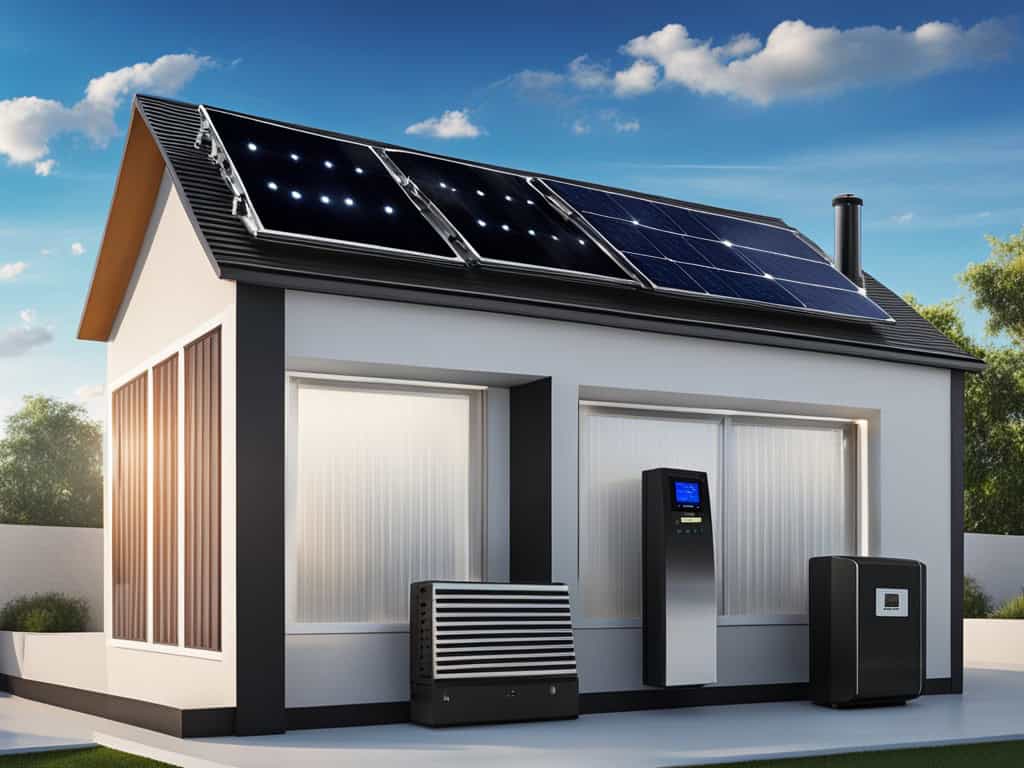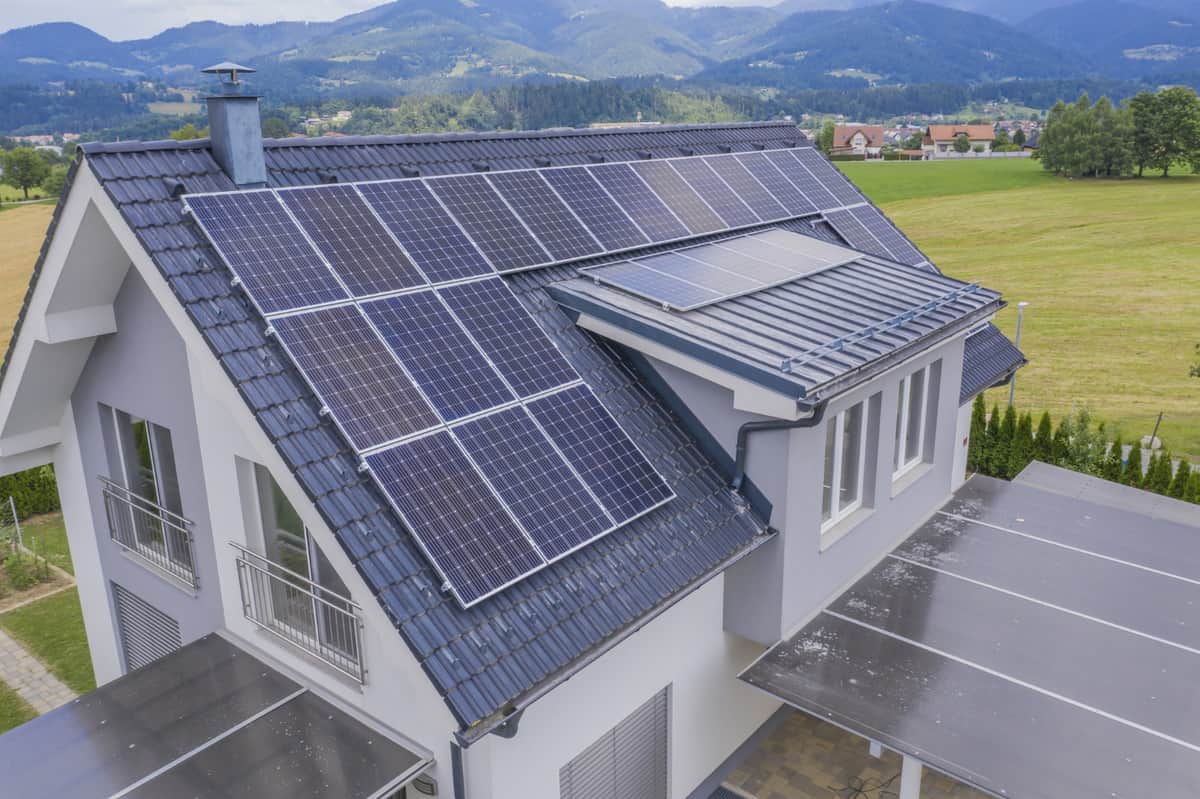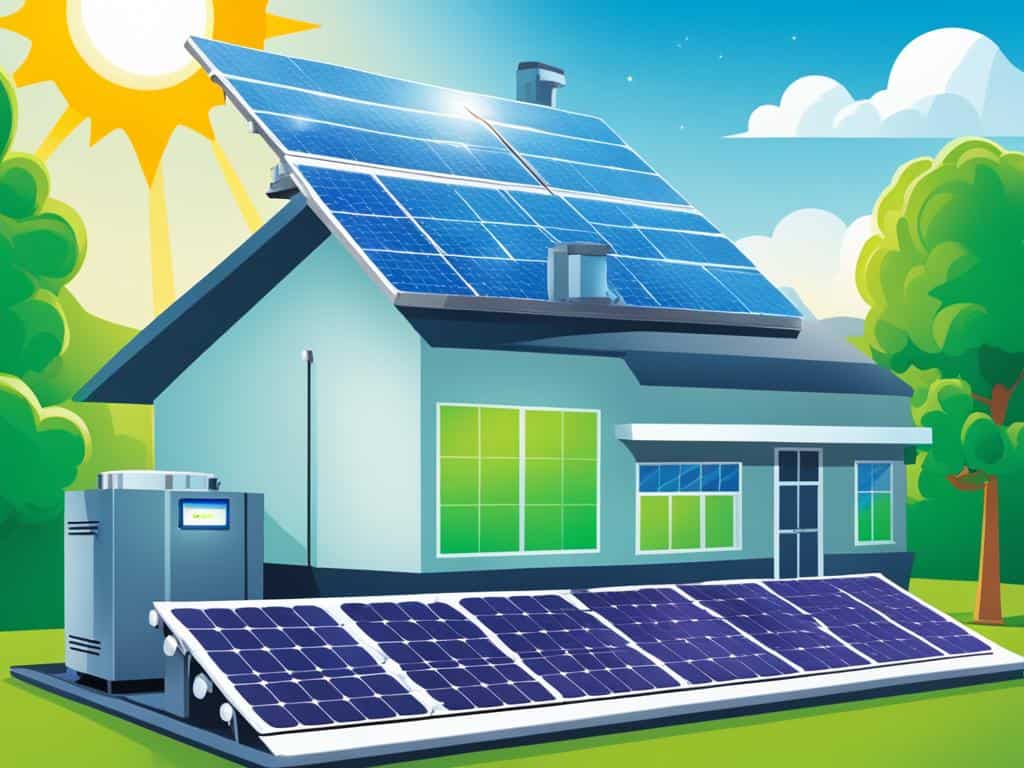So, you’ve decided to harness the power of the sun. You’re researching solar panels, Best Solar Inverter, calculating potential savings, and dreaming of a lower electricity bill and a smaller carbon footprint. That’s fantastic! But in your research, you’ve probably noticed that most of the hype goes to the solar panels themselves.
While panels are the glamorous face of your solar array, they’re only one part of the story. The true brains and brawn of the entire operation—the component that actually makes your solar power usable—is the Best Solar Inverter.
Choosing the best solar inverter isn’t just a technical detail; it’s one of the most critical decisions you’ll make for your system’s performance, reliability, and future potential. Get it right, and you’ll have a seamless, efficient energy-producing machine for decades. Get it wrong, and you could face hidden inefficiencies, frustrating limitations, and higher long-term costs.
This guide is here to ensure you get it right. We’ll demystify inverter technology, break down the different types, compare the top brands, and give you a clear framework to choose the absolute best solar inverter for your unique home and energy goals.
What Exactly is a Solar Inverter and Why is it So Important?
Let’s start with the basics. Your solar panels work by absorbing photons from sunlight and knocking electrons loose, creating a flow of Direct Current (DC) electricity. The problem? Your home, and the entire power grid, runs on Alternating Current (AC).
The solar inverter’s primary job is to be a master translator. It takes the DC electricity from your panels and converts it into the clean, stable AC electricity that powers your fridge, charges your phone, and runs your air conditioner.
But that’s just its core function. Modern inverters are sophisticated energy managers. Their quality and features directly impact:
-
System Efficiency: How much of the raw DC power from your panels actually gets converted into usable AC power for your home. A high-quality inverter has a higher “peak efficiency” (often 98-99%) and maintains that efficiency across a wider range of conditions.
-
System Monitoring: They provide a window into your system’s performance, showing you how much energy you’re producing and consuming in real-time via smartphone apps.
-
Safety: They have built-in mechanisms to immediately shut down if the grid power fails (a critical safety feature for utility workers called “anti-islanding”).
-
Return on Investment (ROI): A more efficient and reliable inverter means more kilowatt-hours (kWh) of energy produced over its lifetime, which translates directly into greater savings on your electricity bill.
Simply put, you can have the most efficient solar panels in the world, but if they’re connected to a mediocre inverter, you’ll never realize their full potential.
The Four Main Types of Best Solar Inverter: Which One is Right for You?
This is the most important distinction you need to understand. The “Best Solar Inverter” depends entirely on your specific situation. The four main types are: String Inverters, Microinverters, Power Optimizer Systems (DC-DC Optimizers), and Hybrid Inverters.
1. String Inverters: The Tried-and-True Workhorse
How they work: This is the traditional, most common type. All (or a string of) solar panels are wired together in a series circuit and connected to a single, central inverter usually mounted on the side of your house or in your garage. The entire string’s DC output is funneled to this one box for conversion to AC.
Pros:
-
Cost-Effective: Generally the least expensive option per watt, as you only need one unit for the entire system.
-
Simple & Proven: Mature technology with a long track record of reliability. Fewer components can mean fewer potential points of failure.
-
Efficient for Ideal Conditions: Performs exceptionally well when all panels are receiving uniform, unobstructed sunlight.
Cons:
-
The “Christmas Lights” Effect: Just like old Christmas lights, if one panel in the string underperforms due to shading, dirt, or snow, the output of the entire string drops to the level of the weakest panel.
-
Limited Panel-Level Monitoring: You can only see the performance of the entire string, not individual panels. If a problem arises, it’s harder to diagnose which specific panel is faulty.
-
Limited Design Flexibility: The system must be designed with strings of panels that have similar orientations and tilt. Adding panels later can be tricky.
Best for: Homes with large, unshaded roofs where all panels can be installed on a single plane facing the same direction. The budget-conscious homeowner who prioritizes upfront cost.
2. Microinverters: The Modern, High-Performance Choice
How they work: Instead of one central inverter, a small microinverter is installed on the mounting rack underneath each individual solar panel. Each microinverter converts the DC from its one panel to AC right there on the roof for the Best Solar Inverter.
Pros:
-
Panel-Level Independence: The performance of one panel is completely unaffected by any other. Shading on one panel only affects that one panel’s output.
-
Maximum Energy Production: This independence is crucial for roofs with chimneys, vent pipes, or nearby trees that cause partial shading throughout the day. They can also handle panels facing multiple directions (e.g., south and west roofs).
-
Enhanced Monitoring: Provides detailed, real-time data on the performance of every single panel, making troubleshooting instant and precise.
-
Scalability & Safety: Easier to expand your system later. The DC wiring on the roof is eliminated or minimized, which can be a safety benefit. They also simplify the rapid shutdown process required by electrical code.
Cons:
-
Higher Upfront Cost: Typically more expensive than a string inverter system due to the cost of multiple units.
-
Maintenance Accessibility: If one fails, a technician may need to access the roof to replace it (though warranties are long and failure rates are low).
Best for: Homes with complex or partially shaded roofs, or roofs with multiple angles and orientations. The homeowner who wants maximum energy production, detailed monitoring, and peace of mind. Brands to know: Enphase.
3. Power Optimizer Systems (DC-DC Optimizers): The Best of Both Worlds?
How they work: This is a hybrid solution for the Best Solar Inverter. Like microinverters, a power optimizer is installed at each panel. However, optimizers don’t convert DC to AC. Instead, they “condition” the DC electricity, stabilizing the voltage and maximizing the DC output before sending it down to a traditional string inverter for final conversion.
Pros:
-
Panel-Level Optimization & Monitoring: Like microinverters, they mitigate shading and mismatch issues at the panel level, ensuring one bad panel doesn’t drag down the rest.
-
Cost: Often sits in a middle ground price-wise between string inverters and full microinverter systems.
-
Efficiency: Can offer very high system-level efficiency.
Cons:
-
Still a Central Inverter: While the optimizers are on the roof, the system still relies on a single string inverter, which remains a potential single point of failure for the entire system.
Best for: Homeowners who want the shading benefits and panel-level monitoring of microinverters but may prefer the slightly different cost structure or technology approach. Brands to know: SolarEdge.
4. Hybrid Inverters (or Battery-Ready Inverters): The Future-Proof Powerhub
How they work: These are multi-mode inverters that combine the functions of a solar inverter and a battery inverter into one unit for the Best Solar Inverter. They are designed from the ground up to seamlessly integrate with a home battery storage system like a Tesla Powerwall or LG Chem RESU.
Pros:
-
Battery Integration: Manages the charging (from solar or the grid) and discharging of your battery with maximum efficiency.
-
Energy Independence: Allows for sophisticated energy management, like using stored solar power at night during peak rate periods or providing backup power during an outage (when paired with a battery).
-
Streamlined Design: One unit instead of two can save space and simplify installation.
Cons:
-
Higher Cost: More complex and expensive than a standard grid-tie inverter.
-
Rapidly Evolving Tech: This is a fast-moving field, so specifications and features are constantly improving.
Best for: Anyone who is installing a solar battery simultaneously or is 100% certain they will add one within a few years. Essential for those seeking backup power or wanting to maximize self-consumption of solar energy.
Top Best Solar Inverter Brands in 2025: A Breakdown
Now that you know the types of the Best Solar Inverter, let’s look at the leading players.
1. Enphase (The Microinverter Leader)
Enphase essentially created and perfected the microinverter market. Their latest model, the IQ8 Series, is a game-changer.
-
Key Feature: “Sunlight Backup.” With a specific setup, certain IQ8 models can allow your solar panels to power your home even during a grid outage (without a battery), something previously impossible with most grid-tie systems.
-
Strengths: Unmatched reliability, superb monitoring software (Enphase App), strong warranty, and a vast network of certified installers.
-
Considerations: Premium pricing.
2. SolarEdge (The Power Optimizer Pioneer)
SolarEdge dominates the optimizer market with its innovative system. Their HD-Wave Inverter paired with Power Optimizers is an industry standard.
-
Key Feature: Offers excellent performance on shaded roofs and provides panel-level monitoring. They also offer integrated EV charging stations.
-
Strengths: High efficiency, good value, and a strong warranty. Their inverters often include built-in energy metering.
-
Considerations: The central inverter is a single point of failure.
3. Huawei (The Global Tech Giant)
A massive player globally, Huawei is known for its FusionHome Solar Inverter systems, which also use optimizers.
-
Key Feature: Offers a “no-string” design that provides panel-level optimization and safety similar to microinverters. Often praised for its quiet operation and sleek design.
-
Strengths: Competitive pricing, strong technology, and high efficiency.
-
Considerations: Brand perception and support networks can vary by region.
4. Fronius (The String Inverter Specialist)
An Austrian company renowned for manufacturing high-quality, durable, and efficient string inverters. The Fronius Primo and Symo series are incredibly popular.
-
Key Feature: “Snapshot” feature allows for easy system commissioning and monitoring. Known for robust build quality and long lifespan.
-
Strengths: Top-tier efficiency, exceptional reliability, and great customer service.
-
Considerations: Not ideal for heavily shaded roofs without additional add-ons.
5. Generac (The Emerging Contender)
Generac, a famous name in backup generators, has entered the solar market with its PWRcell system, a fully integrated solar + battery solution.
-
Key Feature: A complete, AC-coupled ecosystem designed to work perfectly together for whole-home backup power.
-
Strengths: Strong brand recognition in backup power, integrated system design.
-
Considerations: A newer player in the inverter-specific space compared to others.
Key Features to Consider When Choosing the Best Solar Inverter
Beyond the type and brand, drill down into these specifications:
-
Efficiency (Peak and Weighted): Look for a peak efficiency of at least 97%. Weighted efficiency (like CEC efficiency) is a better measure of real-world performance across various operating conditions.
-
Warranty: The standard is 10-12 years, but many brands offer extendable warranties up to 20 or 25 years. This is a huge indicator of the manufacturer’s confidence in their product.
-
Monitoring Capabilities: Check the app! It should be user-friendly, provide detailed real-time and historical data, and offer alerts for system issues.
-
Safety Features: Ensure it meets all necessary grid standards and has rapid shutdown capabilities as required by the National Electrical Code (NEC).
-
Scalability & Battery Readiness: Even if you’re not getting a battery now, choosing an inverter that is “battery-ready” or can easily work with a separate battery inverter later is a wise future-proofing move.
-
Size and Rating: Your installer will size the inverter correctly, but it’s good to know it should be matched to the DC rating of your solar array (e.g., a 10kW DC array might use a 7.6kW or 10kW AC inverter).
The Final Verdict: So, What is the Best Solar Inverter?
There is no single “best” inverter for everyone. The right choice is a personal equation based on your roof, your budget, and your goals.
-
For maximum production on a challenging roof & top-tier monitoring: Enphase microinverters are the premium choice.
-
For excellent performance on a shaded roof with a more cost-effective optimizer solution: SolarEdge is a fantastic option.
-
For a simple, unshaded roof on a tight budget: A high-quality string inverter from Fronius or SMA is a perfectly reliable and efficient choice.
-
For a new system that will definitely include a battery: A Hybrid Inverter from Generac, SolarEdge, or others is the way to go.
The Most Important Factor: Your Installer
The Best Solar Inverter in the world will underperform if it’s installed poorly. The most critical decision you make isn’t just the inverter brand—it’s the solar installer you choose.
A reputable, experienced, and certified installer will:
-
Correctly assess your roof and shading.
-
Design a system that maximizes production for your specific home.
-
Install the equipment safely and to the highest electrical standards.
-
Handle all permitting, interconnection, and warranty paperwork.
-
Provide ongoing support and maintenance.
They will be your guide through this process and will recommend the inverter technology that is truly best for your situation, often based on their own experience and training with certain brands.
READ MORE:
- Why a 4.3KVA Hybrid Solar Inverter for Your Home is the Perfect Energy Solution
- Best Solar Panels for Homes: A Comprehensive Guide to Choosing the Right System
- Do You Need an Inverter for Solar Panels? Here’s What You Should Know!
Your Action Plan:
-
Get quotes from 3-4 certified, well-reviewed local installers.
-
Ask them why they are recommending a specific inverter (Enphase, SolarEdge, Fronius, etc.).
-
Compare not just the total cost, but the equipment, warranties, and monitoring software each proposal includes.
Investing in solar is investing in your home’s future. By taking the time to understand the heart of the system—the inverter—you’re ensuring that your investment pays off for years to come with reliable, clean, and efficient energy.


